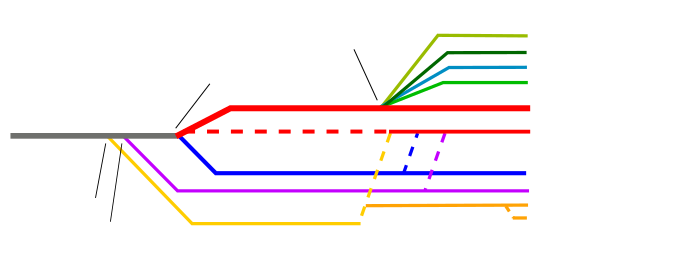Kristian Kalsedon atau Khalkedon (Bahasa Yunani Kuno: Χαλκηδών, khalkedon) ialah cabang-cabang agama Kristian yang menerima dan mengikut keputusan yang dibuat di Majlis Kalsedon, majlis ekumenikal yang keempat, yang diadakan pada tahun 451.[1] Ia menerima Pengakuan Iman Kalsedon, bahawa Yesus Kristus ialah tuhan dan manusia secara serentak, serta dikira sebagai satu orang (prosopon).[2][1] Kristian Kalsedon juga bersetuju dengan Pengakuan Iman Nikaea-Konstantinopel versi Kalsedon, menunjukkan bahawa ia menyokong aliran Kristian Nikaea juga.[1][3]
Fahaman Kristian Kalsedon diterima oleh mazhab Katolik, Ortodoks Timur, dan Protestan, maka ia merangkumi >95% agama Kristian.[4]
Kristologi Kalsedon
Di Majlis Kalsedon, yang hadir bersetuju untuk mempercayai Tritunggal dan Yesus mempunyai dua sifat, dipanggil kesatuan hipostatik. Mereka juga mengecap Arianisme, Modalisme, dan Ebionisme sebagai ajaran sesat, (yang juga telah ditolak pada Majlis Nikaea Pertama pada tahun 325 TM). Mereka juga menentang ajaran Nestorianisme, Eutychianisme, dan Monofisit tentang sifat Yesus (juga ditolak dalam Majlis Efesus Pertama pada tahun 431).
Doktrin Kalsedon mengenai Kesatuan Hipostatik menyatakan bahawa Yesus Kristus mempunyai dua sifat, tuhan dan manusia, memiliki manusia sepenuhnya sementara masih bersifat ilahi sepenuhnya. Ia menjelaskan bahawa Yesus mempunyai sifat manusia dan sifat ketuhanan yang terpisah tetapi tidak bercampur: apabila Yesus menjadi manusia, sifat ilahinya tidak berubah. Walaupun Yesus mempunyai tubuh dan jiwa manusia yang sebenar, dia bukanlah seorang manusia[5][6][7][8] kerana itu bermakna terdapat dua makhluk yang berasingan dalam dirinya, yang akan bertentangan dengan idea bahawa Yesus adalah Tuhan dan manusia dalam satu.
Dalam agama Kristian Rom, segelintir orang mempercayai Kesatuan Hipostatik itu tunggal.[9] Mereka menggunakan teori sifat tunggal seperti Apolinarisme dan Eutychianisme untuk membantu memahami percanggahan dalam fahaman Kristian Kalsedon.

- (Tidak ditunjukkan ialah bukan-Nicene, Antitritunggalisme, dan beberapa mazhab restorasionisme.)
Rujukan
- ^ a b c Meyendorff 1989.
- ^ Grillmeier 1975.
- ^ Kelly 2006.
- ^ "Global Christianity: A Report on the Size and Distribution of the World's Christian Population". Pew Research Center. 19 December 2011. Diarkibkan daripada yang asal pada 30 July 2013. Dicapai pada 17 August 2012.
- ^ "Is Jesus a Human Person?". NCR (dalam bahasa Inggeris). 9 December 2016. Dicapai pada 2023-02-05.
- ^ "Jesus Is Not a Human Person". Catholic Answers. Dicapai pada 2023-02-05.
- ^ "Was Christ a Divine-Human Person? | Reasonable Faith". www.reasonablefaith.org (dalam bahasa Inggeris). Dicapai pada 2023-02-05.
- ^ "Person (in theology) | Encyclopedia.com". www.encyclopedia.com. Dicapai pada 2023-02-05.
- ^ Olupona, Jacob K. (2014). African Religions: A Very Short Introduction. Oxford: Oxford University Press. m/s. 90. ISBN 978-0-19-979058-6. OCLC 839396781.
Sumber
- Athanasopoulos, Constantinos; Schneider, Christoph, penyunting (2013). Divine Essence and Divine Energies: Ecumenical Reflections on the Presence of God. Cambridge, UK: James Clarke & Co. ISBN 9780227900086.
- Kharlamov, Vladimir (2009). The Beauty of the Unity and the Harmony of the Whole: The Concept of Theosis in the Theology of Pseudo-Dionysius the Areopagite. Eugene: Wipf and Stock Publishers. ISBN 9781606081648.
- Chesnut, Roberta C. (1978). "The Two Prosopa in Nestorius' Bazaar of Heracleides". The Journal of Theological Studies. 29 (2): 392–409. doi:10.1093/jts/XXIX.2.392.
- González, Justo L. (2005). Essential Theological Terms. Louisville: Westminster John Knox Press. ISBN 9780664228101.
- Florovsky, Georges (1987). The Eastern Fathers of the Fourth Century. Vaduz: Büchervertriebsanstalt. ISBN 9783905238075.
- Grillmeier, Aloys (1975) [1965]. Christ in Christian Tradition: From the Apostolic Age to Chalcedon (451) (ed. 2nd revised). Louisville: Westminster John Knox Press. ISBN 9780664223014.
- Kelly, John N. D. (2006) [1972]. Early Christian Creeds (ed. 3rd). London-New York: Continuum. ISBN 9780826492166.
- Loon, Hans van (2009). The Dyophysite Christology of Cyril of Alexandria. Leiden-Boston: Brill. ISBN 978-9004173224.
- Menze, Volker L. (2008). Justinian and the Making of the Syrian Orthodox Church. Oxford: Oxford University Press. ISBN 978-0-19-953487-6.
- Meyendorff, John (1966). Orthodoxy and Catholicity. New York: Sheed & Ward.
- Meyendorff, John (1989). Imperial Unity and Christian Divisions: The Church 450–680 A.D. Crestwood, NY: St. Vladimir's Seminary Press. ISBN 9780881410563.
- Nichols, Aidan (2010) [1992]. Rome and the Eastern Churches: A Study in Schism (ed. 2nd revised). San Francisco: Ignatius Press. ISBN 9781586172824.
- Norris, Richard A., penyunting (1980). The Christological Controversy. Minneapolis: Fortess Press. ISBN 9780800614119.
- Ostrogorsky, George (1956). History of the Byzantine State. Oxford: Basil Blackwell.
- Pásztori-Kupán, István (2006). Theodoret of Cyrus. London & New York: Routledge. ISBN 9781134391769.








